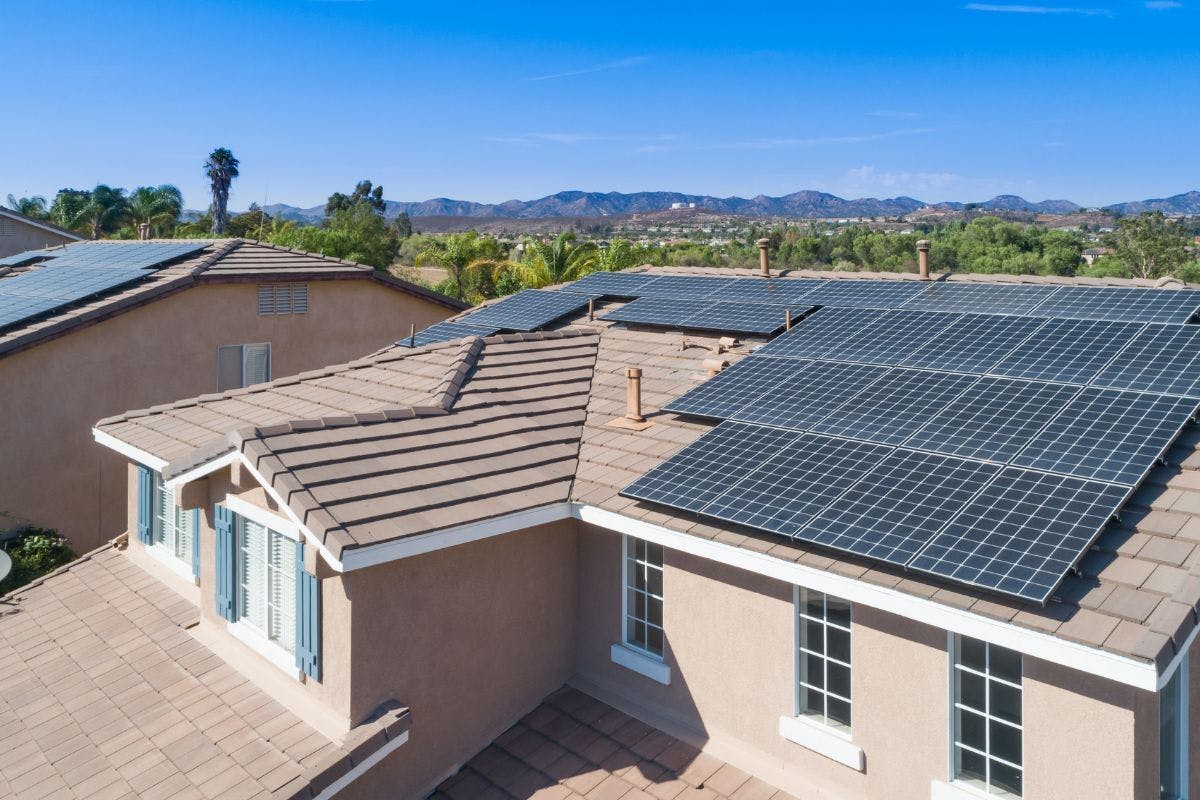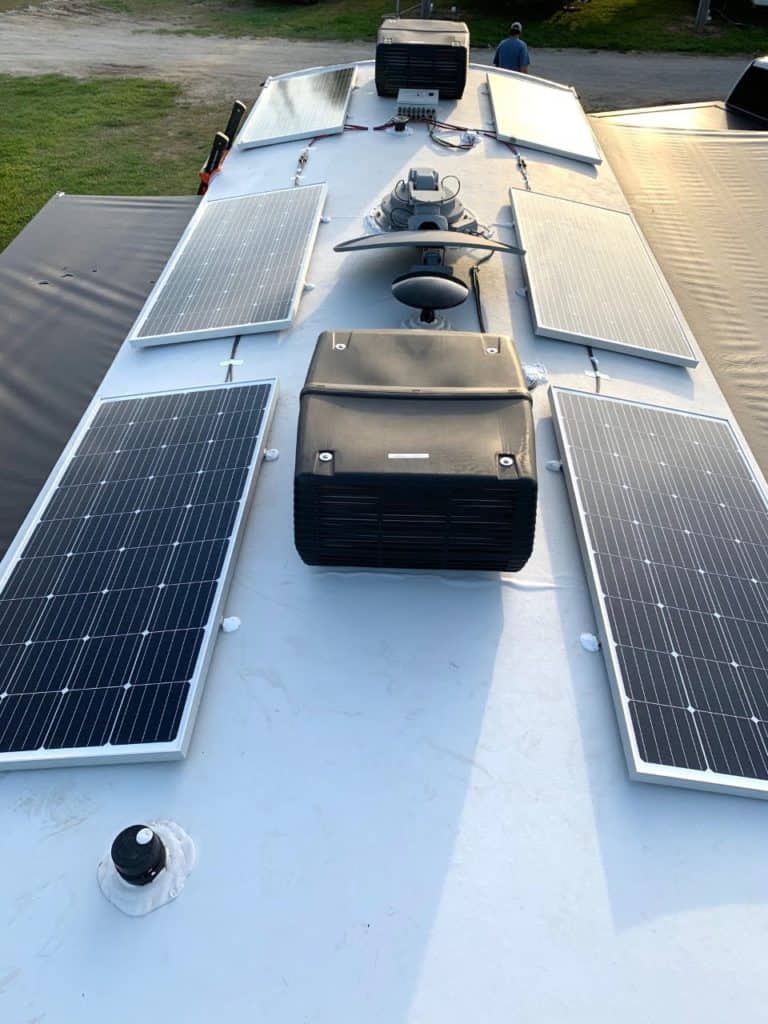Exploring the Different Sorts Of Solar Panels and Their Distinct Benefits
The landscape of solar panels provides numerous choices, each with distinct benefits matched to different applications. Monocrystalline panels attract attention for their efficiency and looks, while polycrystalline models interest budget-conscious customers. Thin-film modern technology supplies adaptability in setup. Innovative layouts like building-integrated and bifacial photovoltaics better enhance the allure of solar energy. Recognizing these distinctions is crucial for making notified choices. The concern remains: which kind will best satisfy particular power needs?
Monocrystalline Solar Panels
Different types of solar panels are available, monocrystalline solar panels are often regarded as the most reliable option. These panels are made from a solitary crystal structure, usually silicon, which permits them to convert sunlight right into electrical energy better than other kinds. The efficiency prices for monocrystalline panels can range from 15% to over 22%, making them a preferred choice for domestic and business installations where area is restricted.

Polycrystalline Solar Panels
Polycrystalline solar panels are produced making use of a distinctive production process that includes melting numerous silicon crystals together. This method can cause advantages such as lower manufacturing expenses, making them a preferred option for numerous customers. Their effectiveness and performance elements may vary contrasted to various other types of solar panels, warranting mindful factor to consider.
Production Refine Advantages
The manufacturing procedure of polycrystalline solar panels supplies several benefits that add to their appeal in the renewable resource market. The manufacturing uses silicon scrap, which minimizes waste and lowers product expenses, making it economically practical. Unlike monocrystalline panels, the production of polycrystalline panels entails simpler and much less energy-intensive strategies, causing a smaller carbon impact. In addition, the spreading procedure enables for the creation of multiple cells simultaneously, boosting efficiency in production. This technique likewise leads to an extra consistent framework, which can improve the total performance and longevity of the panels. Polycrystalline solar panels offer a cost-efficient option for customers while promoting lasting production practices within the sector.
Efficiency and Efficiency Factors
Just how do performance and performance aspects influence the efficiency of polycrystalline solar panels? These panels typically exhibit reduced efficiency prices, balancing around 15-20%, contrasted to their monocrystalline counterparts. Factors such as temperature level sensitivity, shading, and the angle of installation substantially impact their efficiency. Polycrystalline panels often tend to perform far better in cooler environments but may have a hard time in high temperatures, causing decreased output. In addition, their performance can be influenced by dust and particles accumulation, demanding normal upkeep. In spite of these challenges, polycrystalline panels are much more budget friendly and offer a solid balance in between expense and efficiency. Recognizing these performance and performance aspects is essential for consumers looking for to maximize solar power manufacturing and general system performance.
Thin-Film Solar Panels
Thin-film solar panels stand for a functional and lightweight alternative in the solar power landscape. These panels are constructed by transferring several thin layers of photovoltaic product onto a substratum, which can include plastic, glass, or metal. This production process enables greater adaptability in layout and applications contrasted to conventional crystalline solar panels.
Thin-film modern technology commonly features lower performance rates, yet it compensates for this with decreased manufacturing costs and boosted performance in low-light problems. Their lightweight nature makes them appropriate for installation on diverse surface areas, including bent frameworks and lorries. In addition, these panels can be integrated into building products, offering aesthetic advantages together with power generation.
Bifacial Solar Panels
Bifacial solar panels are getting focus for their enhanced efficiency and performance, as they can catch sunshine from both sides. This dual-sided layout permits for boosted power production, particularly in reflective settings. Additionally, their installation uses potential cost advantages, making them an attractive option for various applications.
Efficiency and Efficiency
The performance and efficiency of solar panels are essential elements in establishing their effectiveness in energy generation, with bifacial solar panels standing apart for their ingenious layout. These panels include solar batteries on both sides, allowing them to record sunlight from several angles. This dual-sided capability enhances power output, particularly in environments with reflective surface areas, such as snow or sand. Bifacial solar panels can increase energy production by 10-20% contrasted to typical monofacial panels. Their ability to harness indirect sunlight adds to their total effectiveness, making them an engaging selection for different applications. Additionally, developments in innovation proceed to boost their efficiency metrics, strengthening their place in the sustainable power landscape as a very effective service for solar power generation.
installation and Expense Benefits
When considering the benefits of bifacial photovoltaic panels, the installation process and price benefits are substantial aspects that can affect decision-making for both household and industrial applications. Bifacial panels can be mounted on various frameworks, including rooftops and ground setups, allowing for flexible release. Their capability to absorb sunshine from both sides enhances energy generation without calling for extra panels. This efficiency can cause lowered overall installation prices, as fewer devices might be needed to attain preferred power results. Additionally, their toughness typically converts to decrease maintenance costs with time (Residential Solar Installation). Therefore, the lasting economic benefits, combined with installation versatility, make bifacial solar panels an enticing choice for those seeking sustainable energy solutions
Building-Integrated Photovoltaics (BIPV)
Building-Integrated i thought about this Photovoltaics (BIPV) represent a considerable advancement in solar modern technology, perfectly including solar batteries right into structure materials such as windows, frontages, and roof coverings. This cutting-edge technique not just produces sustainable power yet additionally improves the aesthetics and performance of structures. BIPV systems can replace standard structure materials, lowering the general cost of building and construction while adding to energy effectiveness.
The assimilation of solar technology right into building style allows for far better room use, as these systems can be set up without calling for added land. On top of that, BIPV remedies are adjustable, enabling designers to create special designs that enhance the structure's overall look. The dual capability of BIPV-- serving both as a power generator and an architectural element-- offers substantial benefits in metropolitan environments where space is restricted. As understanding of lasting building techniques grows, BIPV is coming to be a progressively attractive option for developers and house owners alike.
Concentrated Photovoltaic (CPV) Equipments
Concentrated Photovoltaic (CPV) systems represent an innovative solar technology that mirrors or makes use of lenses to focus sunshine onto high-efficiency solar batteries. This innovative method permits for the collection of considerably more solar power than typical solar systems. By focusing sunshine, CPV systems can attain greater efficiencies, usually exceeding 40%, making them especially appropriate for locations with high straight sunshine.
In addition, CPV systems typically need less acreage contrasted to traditional photovoltaic panels, as they create even more power from a smaller footprint. These systems frequently integrate monitoring systems that see here adjust the position of the lenses or mirrors to follow the sun's movement, maximizing energy capture throughout the day. However, CPV technology is ideal suited for particular geographic locations, where straight sunshine is plentiful, limiting its applicability in regions with frequent cloud cover. Overall, CPV systems provide an encouraging choice for improving solar power manufacturing in perfect environments
Contrast of Solar Panel Efficiency and Cost
Although different solar panel modern technologies exist, their performance and cost can significantly vary, influencing customer options and market dynamics. One of the most typical types-- thin-film, polycrystalline, and monocrystalline-- exhibit distinct features in performance and rates. Monocrystalline panels tend to provide the highest possible effectiveness prices, usually going beyond 20%, however they generally come with a greater price. In contrast, polycrystalline panels are usually more economical, with efficiencies around 15-20%, making them a prominent selection for budget-conscious consumers. Thin-film innovations, while much less effective at around 10-12%, provide adaptability and lower installation prices, appealing to specific applications.
Eventually, picking the best photovoltaic panel entails considering the equilibrium in between efficiency and cost. Consumers need to consider their energy needs, budget constraints, and long-lasting financial savings potential, as these factors will determine the very best option for their solar power system.
Regularly Asked Concerns
How Much Time Do Solar Panels Generally Last Before Needing Replacement?
Solar panels normally last in between 25 to thirty years prior to needing substitute. Their durability depends upon numerous variables, consisting of top quality, setup, and local environmental conditions, which can impact their performance and longevity in time.

Can Solar Panels Operate In Cloudy or Rainy Issues?
Solar panels can certainly function in wet or cloudy problems, albeit at minimized performance. They still record scattered sunlight, permitting power generation, though power outcome might be considerably less than on sunny days.
What Maintenance Is Needed for Solar Panels?
Routine maintenance for solar panels includes periodic cleansing to remove dirt and debris, inspecting for damage, ensuring connections are safe, and assessing system performance. Regular examinations can improve effectiveness and prolong the lifespan of the panels.
Are There Any Kind Of Environmental Influences From Production Solar Panels?
Yes, manufacturing solar panels can have environmental influences, including resource extraction, energy consumption, and waste generation. Improvements in innovation aim to decrease these impacts, promoting more lasting practices in manufacturing and recycling processes.
Exactly how Do I Choose the Right Photovoltaic Panel for My Home?

Numerous types of solar panels are offered, monocrystalline solar panels are commonly related to as the most efficient alternative. Thin-film solar panels represent a light-weight and functional alternative in the solar power landscape. The efficiency and efficiency of solar panels are go to this website important factors in determining their performance in energy generation, with bifacial solar panels standing out for their cutting-edge style. Building-Integrated Photovoltaics (BIPV)
Building-Integrated Photovoltaics (BIPV) represent a stand for evolution considerable advancement technology, innovation incorporating flawlessly cells into building materials structure as roofing systems, roofs, home windows facades. Concentrated Photovoltaic (CPV) systems represent an advanced solar modern technology that mirrors or uses lenses to concentrate sunshine onto high-efficiency solar cells.